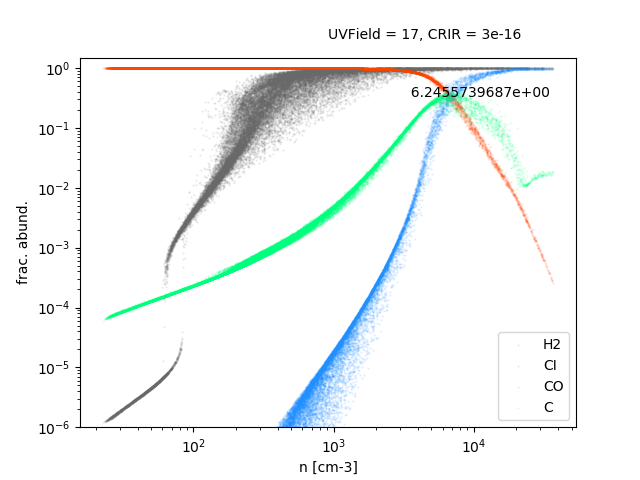Fractional abundance of chemical species in 3D SPH simulations
by Laura MannsCarbon Monoxide, CO, is commonly used to trace molecular Hydrogen, H2, in molecular clouds: the sites of star formation. We investigate the preconditions for star fomation in colliding clouds with a SPH simulation of two identical clouds that collide head-on.
The focus lies on the changing chemical composition of the SPH particles. We use the approach by Nelson and Langer (1999) to model the chemical evolution and compare with theoretical predictions (see figure). With rising density, the hydrogen present in the simulation transitions from atomic to molecular.
The setup is two 1000 $M_{\odot}$ clouds of uniform density and radius of 19 pc, starting fully atomic, placed 57 pc apart from each other. The turbulent velocity is set to 1 km/s and the collisional speed is 7.5 km/s.
Within a few Myr, the temperature drops enough in order to form stable molecules, thought to be a precondition for star formation. Further investigations might yield the creation of more and more sink particles, especially after the effects of shielding will have been included.
